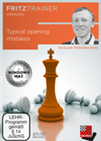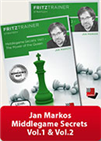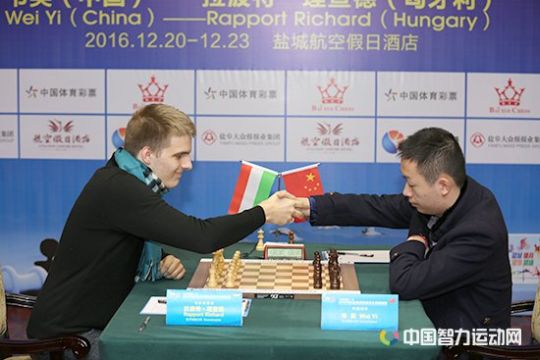The two strongest juniors in the world
Richard Rapport recently helped Ding Liren to become the 17th undisputed world chess champion. Now representing Romania, the Hungarian-born grandmaster was thus described by Ding in an interview for El País:
The main key has been my analyst, Richard Rapport. He has brought all the creativity that I was lacking with my openings.
 Avoiding mistakes in the opening and even learning from mistakes is a valuable tool to improve your chess. Ruslan Ponomariov, former FIDE World Champion, demonstrates basic patterns that will help you navigate through the game more easily.
Avoiding mistakes in the opening and even learning from mistakes is a valuable tool to improve your chess. Ruslan Ponomariov, former FIDE World Champion, demonstrates basic patterns that will help you navigate through the game more easily.As noted by Ding, Rapport is a creative force in the chess world. His uncompromising style did not prevent him from rising through the ranks, though. Currently the number 13 in the world ranking, Rapport was once the highest-rated junior player (under-20) in the world. In December 2016, his 2717 rating had him atop the junior ranking, only ten points ahead of China’s Wei Yi, yet another prodigious player known for his creative abilities.
Fittingly, the confluence of the two imaginative juniors was celebrated back then, when a match consisting of four classical games (plus tiebreaks if needed) was organized in Yancheng, Jiangsu province, China.
The first two games finished decisively, with the youngsters trading wins with the white pieces. Two more exciting encounters followed, albeit both finishing drawn. In the blitz tiebreaker, once again the players first traded wins (but this time with black), which meant an Armageddon encounter would decide the winner. Rapport only needed a draw with black, but managed to win to clinch overall victory.
True to his style, Rapport played the Caro-Kann Defence and the French Defence with black in the classical games (he replied by 1...g6 to 1.e4 in the blitz). His influence on Ding was made clear during the match in Astana, as the new world champion shocked the chess world by playing the French in game 7. Amid the memorable confrontation, Olimpiu Di Luppi made a noteworthy discovery on social media:
An artist indeed, one whose contribution to the royal game should not be underestimated.

Richard Rapport walking next to Ding Liren soon after the latter became the new world chess champion | Photo: FIDE / Anna Shtourman
A close match
Based on ChessBase reports authored by Marco Baldauf (first report | second report)
Only ten rating points separate Richard Rapport (2717) and Wei Yi (2707), the world’s two best juniors. And the match they played on December 20-23 in Yancheng was close. A 2-2 tie after four classical games required a blitz tiebreak. After two blitz games and another 1-1 tie, an Armageddon game decided the match in favour of Rapport.
 Let us learn together how to find the best spot for the queen in the early middle�game, how to navigate this piece around the board, how to time the queen attack, how to decide whether to exchange it or not, and much more!
Let us learn together how to find the best spot for the queen in the early middle�game, how to navigate this piece around the board, how to time the queen attack, how to decide whether to exchange it or not, and much more!
- In game 1, Wei Yi delighted his fans with a spectacular attack.
- In game 2, Richard Rapport countered with a convincing technical win.
- In game 3, the young Hungarian again showed strong positional chess. With Black he tried the rarely played but interesting Tartakower Variation of the Caro-Kann and obtained a clear advantage in a queenless middlegame. But he missed a good chance and allowed Wei Yi to build a fortress in a minor-piece ending which secured the draw.
- In game 4, Rapport repeated the Trompowsky from game 2 but this no longer caught Wei Yi by surprise. A spectacular opening led to an endgame with opposite-coloured bishops in which Wei Yi had some pressure but not enough to overcome Rapport’s defence.
After two games, the blitz tiebreak ended with another 1-1 tie and an Armageddon game was needed to decide. Rapport won the Armageddon and the match.
All in all, this win was deserved: in games 2 and 3, Rapport outplayed Wei Yi, and in the first game, which Wei Yi won, Rapport had a good position but tried too hard and lost.

All games annotated by GM Marco Baldauf
Throwback Thursdays

























